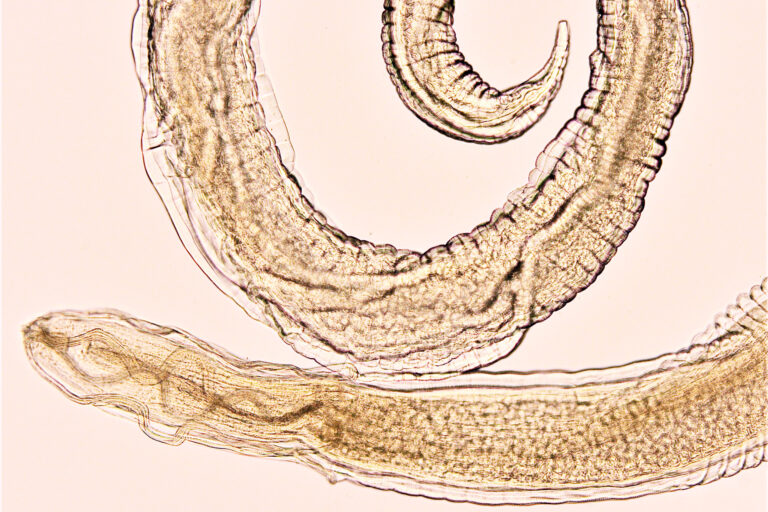Synhimantus laticeps

Ordnung: SPIRURIDA
Familie: ACUARIIDAE
Ursprungsgebiet: Weltweit
Wirte:
Greifvögel
Greifvögel
Nematoden der Gattung Synhimantus gehören zu den am häufigsten vorkommenden parasitären Würmern in Greifvögeln. Dort parasitiert Synhimantus laticeps vorwiegend im Vormagen (Proventriculus) (Krone 2000; Ferrer et al. 2004). Nach Ebmer et al. (2017) können männliche Tiere eine Körperlänge von ca. 6 mm erreichen, während Weibchen mit bis zu 9 mm etwas größer werden. Am hinteren Körperende der männlichen Individuen befindet sich das sogenannte Spiculum – ein Teil des Begattungsorganes, welches artspezifisch ist (Acosta et al. 2010).
Humanpathogenität: Ein Befall des Menschen mit dem Nematoden Synhimantus laticeps ist derzeit nicht bekannt.
Exemplarische Quellen
-
Acosta, I et al. (2010)Acuaroid nematodes in the common kestrel (Falco tinnunculus) in the south of Spain. Veterinary journal (London, England : 1997), vol. 183, n° 2, p. 234–237.
-
Ebmer, D et al. (2017)Morphological and molecular genetic analysis of Synhimantus (Synhimantus) laticeps (Rudolphi, 1819) (Nematoda, Acuariidae) from the barn owl (Tyto alba) and the common kestrel (Falco tinnunculus) in Austria. In : Helminthologia, vol. 54, n° 3, p. 262–269.
-
Ferrer, D et al. (2004)Helminths isolated from the digestive tract of diurnal raptors in Catalonia, Spain. The Veterinary record, vol. 154, n° 1, p. 17–20.
-
Krone, O (2000)Endoparasites in free-ranging birds of prey in Germany. In : Raptor biomedicine III, p. 101–116.